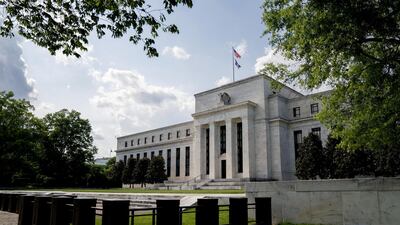Low volatility and complacent markets are often a precursor of more bumpy times ahead. While measures of financial market price moves were hitting rock bottom levels a few weeks ago, some were bemoaning how quiet markets were. Meanwhile, the best traders were scouring the calendar for risk events that could herald the end of the calm before the storm hit.
Within the past week, markets have been forced to address a much more hawkish US Federal Reserve meeting. Although their statement was little changed, optimism on President Joe Biden’s spending plans and the reopening economy saw positive revisions to growth forecasts and even more substantial inflation changes, with the Fed’s main measure, the core personal consumption expenditure index, now set to end this year at 3 per cent versus the 2.2 per cent that was previously forecast.
This, in turn, has crucially moved the dial forward on future interest rate hikes to 2023, with seven out of 18 Fed officials now going for a rate move next year.
The consequences of this surprising volte-face are now affecting investors in many ways, as it was presumed by a consensus that the “patient” Fed would continue to look through rising price pressures and not raise rates until 2024.
The previous central bank meeting had also seen chair Jerome Powell utter the infamous phrase that “it is not the time to start talking about tapering”, in reference to the first part of the process of normalising monetary policy and cutting back on the bond-buying programme. It would appear the Fed is now well advanced with this discussion.
There is a saying that you should not fight the Fed. This makes total sense when you think about it as the US government and central bank have pretty much unlimited resources. So, investors are always well-advised not to bet against its policies.
If the Fed wants inflation, for instance, possibly because they believe it is a way out of the massive debt they have run up both after the financial crisis and the Covid-19 pandemic, then investors shouldn’t stand in their way.
Certainly, the market moves since the meeting show that traders are now scrambling to adjust their long-held positions. We have seen major rotations in markets as investors back out of the so-called crowded and expensive “reflation trade”.
Commodity prices have tumbled, long-dated US government bond prices have raced higher, forcing down yields, and the US dollar enjoyed its best five-day streak since last September by the end of the week of the shock Fed meeting.
The switch out of value stocks into growth companies was highlighted by the outperformance of the tech-heavy Nasdaq over the Dow and broader S&P 500 indices.
Gold especially felt the full force of the volatile market and plunged 6 per cent lower over the week – its biggest weekly loss in 15 months. The precious metal is a store of value but it has no opportunity cost as there is no yield. This is why it tends to correlate negatively with real interest rates, which gapped sharply higher after the Fed rendezvous.
While they promised to hold interest rates at zero and let inflation expectations grow, gold was a desirable asset for investors to include in their portfolios. Now, with interest rates starting to move higher and above the rate of inflation, other safe assets have become relatively more appealing, dulling the attractiveness of bullion.
The pressing concern for gold prices may lie with inflation and whether or not the forecasted lift – which is already being seen throughout the economy – will be transitory or more lasting.
A transitory trend in inflation may still be in line with current Fed thinking and would see rates potentially rise but not too much, which bodes well for gold. Alternatively, more lasting inflation could cause rates to rise higher than expected and while the Fed would try to contain upside price pressure, the implication would likely drag on gold.
Much depends on policymakers’ views, even as some on Wall Street believe their meeting is simply a transient tailwind for dollar strength and the related shifts in markets.
Many economists still predict broad weakness in the greenback, driven by the currency’s high valuation and widening global economic recovery. All this bodes well for increased volatility, in contrast to those quieter weeks some were condemning a few weeks ago.
Hussein Sayed is the chief market strategist at Exinity

